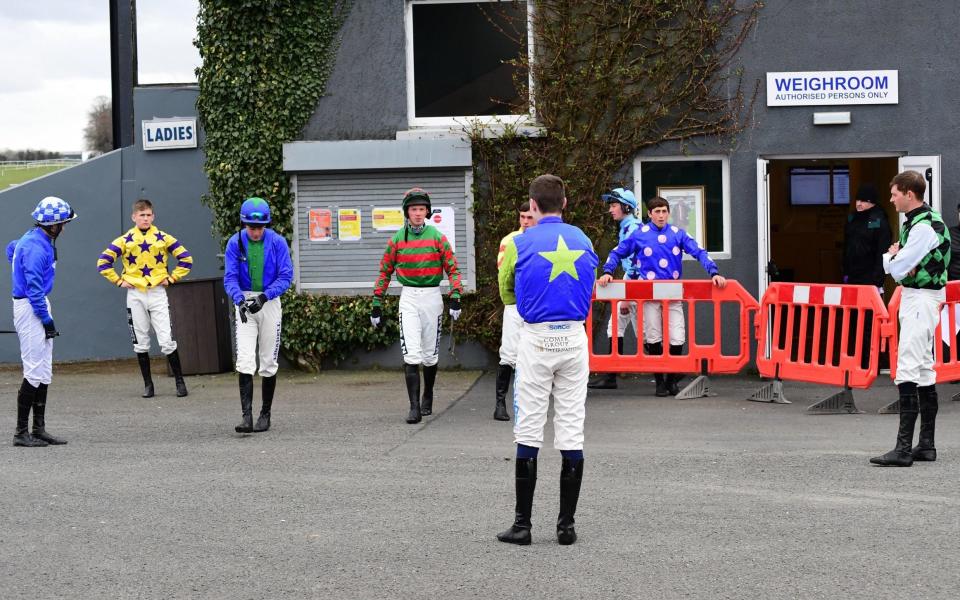Get in, race, get out – how horse racing will look behind closed doors

No saunas, no showers, no catering, no overnight accommodation for horses or staff, 72-hour declarations, an isolation area for anyone taken ill, the use of masks, jockeys debriefing trainers by telephone, all overseen by a social-distancing officer – that is a snapshot of British racing behind closed doors.
Nine days in advance of racing’s intended resumption on June 1 – it is awaiting government clearance – the British Horseracing Authority published a 33-page guide on Saturday to the rules for racing behind closed doors. It has been put together by the BHA’s chief medical officer, Dr Jerry Hill, who has been working with a group of his equivalents from other major sports and Public Health England.
Apart from officials and those personnel required to run a race day, numbers will be restricted to one lad per horse, one trainer or his representative, a travelling headlad and a horsebox driver (although those roles are often combined).
Only jockeys booked to ride – observing the two-metre social-distancing rules within the changing room – can attend, along with one broadcaster, two journalists and two photographers. Owners are among those excluded for the time being.
Even the very limited number of people allowed on a racecourse will have to pass a three-step health check, which includes an education module about Covid-19, a questionnaire about their recent well-being and having their temperature recorded. Anyone displaying a temperature over 37.8C will be given their marching orders.
Attendees will be encouraged to avoid any areas on the course unrelated to them and must leave the course as soon as their job is done. The BHA and the racecourse executive have the power to eject any attendee for breach of the rules.
Trainers have been requested not to send unruly or difficult horses to races, particularly if they are bad loaders at the stalls – a maximum of two stall handlers will be allowed to push a horse in – or kickers, biters, difficult to shoe, have shown signs before of heat stress or need a companion animal.
However, while the BHA describes it as a “risk-managed return”, it also points out that the background risk to racing without a crowd is low because it is a non-contact sport, it takes place outdoors and most attendees are from rural areas, where the incidence of Covid-19 has been lower.
Stable staff have already adapted well to social distancing in their yards and the vast majority attending will arrive in their own vehicles so are not dependent on public transport.

 Yahoo Sport
Yahoo Sport 





































